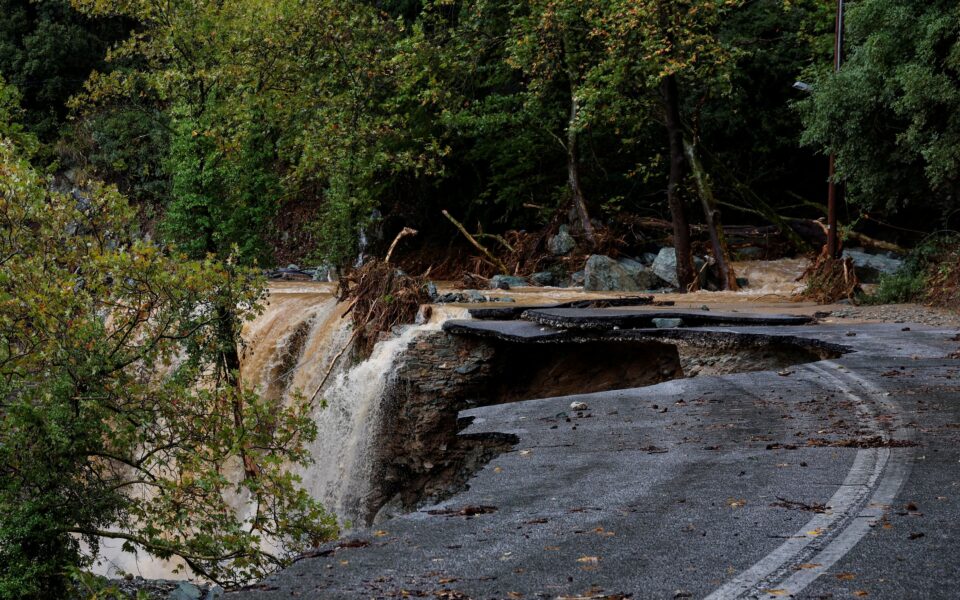Cleaning operation continues in Volos, Mount Pelion after torrential rain

Authorities in the city of Volos and its prefecture of Magnessia, including the popular tourist region of Mount Pelion, in central Greece, were struggling to remove the debris and restore water supply following a two-day deluge that flooded the city and caused landslides in various parts of the prefecture.
In Volos proper, pumping stations and a large part of the water distribution network have been destroyed by the storm this past week.
Through some repairs the city has been supplying non-drinkable water intermittently and by rotation at specific times, while bottled water has been brought in the city by trucks and ship paid for by the city and by donors. It has been distributed through city halls in the city proper and nearby areas.
At the same time, city personnel are working at removing mud and materials to clear streets, which are also blocked by cars swept away by the floods following torrential rains in the region. The greatest problems are faced by neighborhoods near the Old Port and Palea, where tons of mud have collected.
The prefecture of Magnessia in general is facing great destruction in its road infrastructure, which has also made it nearly impossible to rescue holiday makers in the villages of Mount Pelion by road. Roads and bridges have collapsed and several rescues can only be achieved by sea, especially on the coasts.
Army mechanics are working to complete the Belley-type metal bridge over the Pelegrino torrent, which would reconnect south Pelion with Volos. In east Pelion, the villages of Zagora, Pouri and Chorefto, Anilio and Mouressi remained isolated and there was no more supply of food or power in the region. A crew from the state-run power utility PPC arrived by boat from Volos to restore power in the southern part of the mountain.
In the Athens-Thessaloniki National Highway, a temporary halt to traffic was introduced by police because of a high level of water on the tarmac. This affected the section near Larissa and lanes heading toward Thessaloniki, while in Pieria (between Larissa and Thessaloniki) traffic was halted in the direction toward Athens until the situation improves. Some exceptions were allowed, including emergency vehicles, otherwise route diversions were introduced.
[AMNA]





